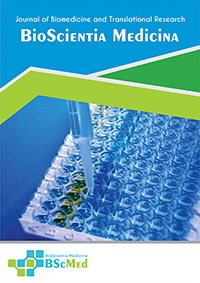Main Article Content
Abstract
Background: Sepsis is a leading cause of mortality, driving the search for biomarkers that can accurately reflect its severity. The immature platelet fraction (IPF) measures real-time thrombopoiesis, which is profoundly stressed during sepsis. Its clinical utility relative to conventional platelet indices (MPV, PDW) in predicting organ dysfunction remains to be fully elucidated. This study aimed to explore the relationship between these platelet parameters and the Sequential Organ Failure Assessment (SOFA) score in adult sepsis patients.
Methods: An observational, cross-sectional study was conducted on 32 adult patients diagnosed with sepsis at a tertiary hospital in Medan, Indonesia. Upon admission, platelet indices and IPF were measured using a Sysmex XN-1000 hematology analyzer. The SOFA score was calculated to quantify organ dysfunction. The relationships between variables were assessed using Pearson or Spearman correlation analysis.
Results: The analysis revealed a statistically significant but weak positive correlation between IPF and the SOFA score (r=0.354, p=0.047). In contrast, conventional indices like MPV (r=0.219, p=0.228) and PDW (r=0.190, p=0.297) showed no significant association with the SOFA score. Mechanistically, strong positive correlations were confirmed between IPF and both MPV (r=0.768, p<0.001) and PDW (r=0.775, p<0.001), reflecting a coordinated bone marrow response.
Conclusion: This study reveals a critical paradox in sepsis: while the bone marrow mounts a robust thrombopoietic response, evidenced by the tight correlation between markers of platelet production, this response is poorly coupled with clinical outcomes. The weak association between IPF and organ dysfunction severity suggests that IPF's primary utility may not be as a standalone prognostic tool, but rather as a biomarker of a high-turnover, "futile thrombopoiesis." This highlights the complexity of platelet kinetics in sepsis and warrants further investigation into its role within a multi-marker prognostic strategy.
Keywords
Article Details
As our aim is to disseminate original research article, hence the publishing right is a necessary one. The publishing right is needed in order to reach the agreement between the author and publisher. As the journal is fully open access, the authors will sign an exclusive license agreement.
The authors have the right to:
- Share their article in the same ways permitted to third parties under the relevant user license.
- Retain copyright, patent, trademark and other intellectual property rights including research data.
- Proper attribution and credit for the published work.
For the open access article, the publisher is granted to the following right.
- The non-exclusive right to publish the article and grant right to others.
- For the published article, the publisher applied for the Creative Commons Attribution-NonCommercial-ShareAlike 4.0 International License.





